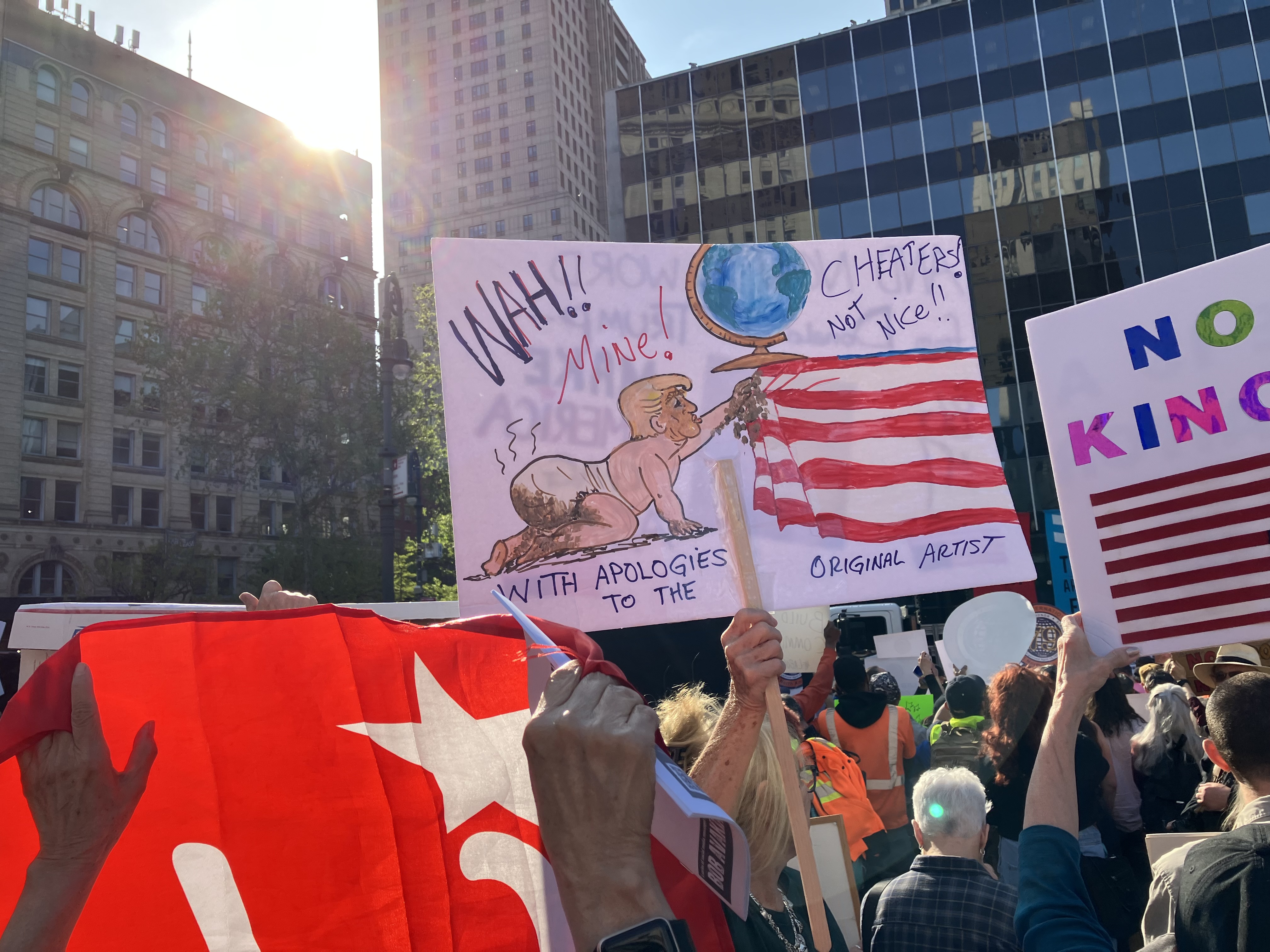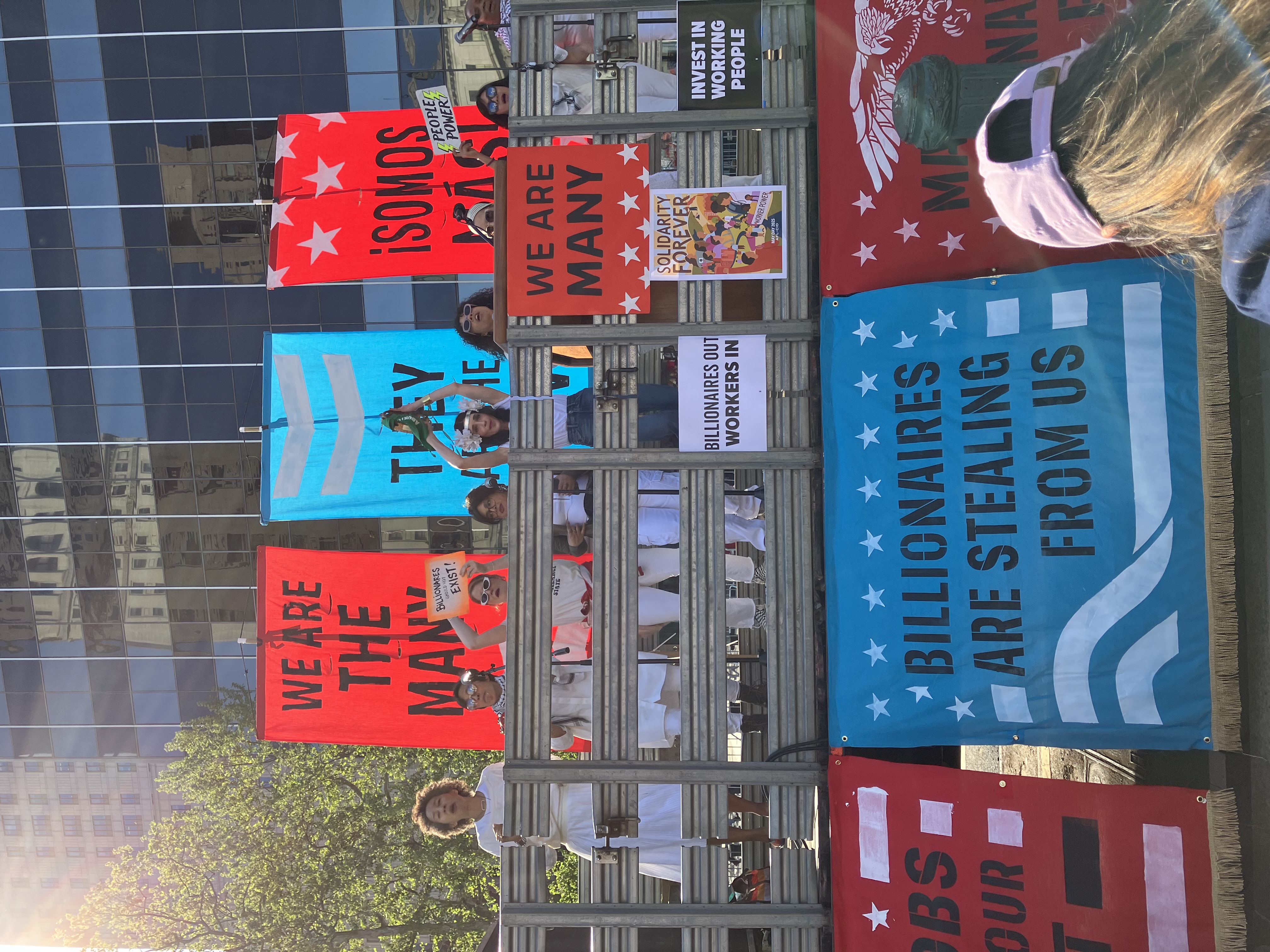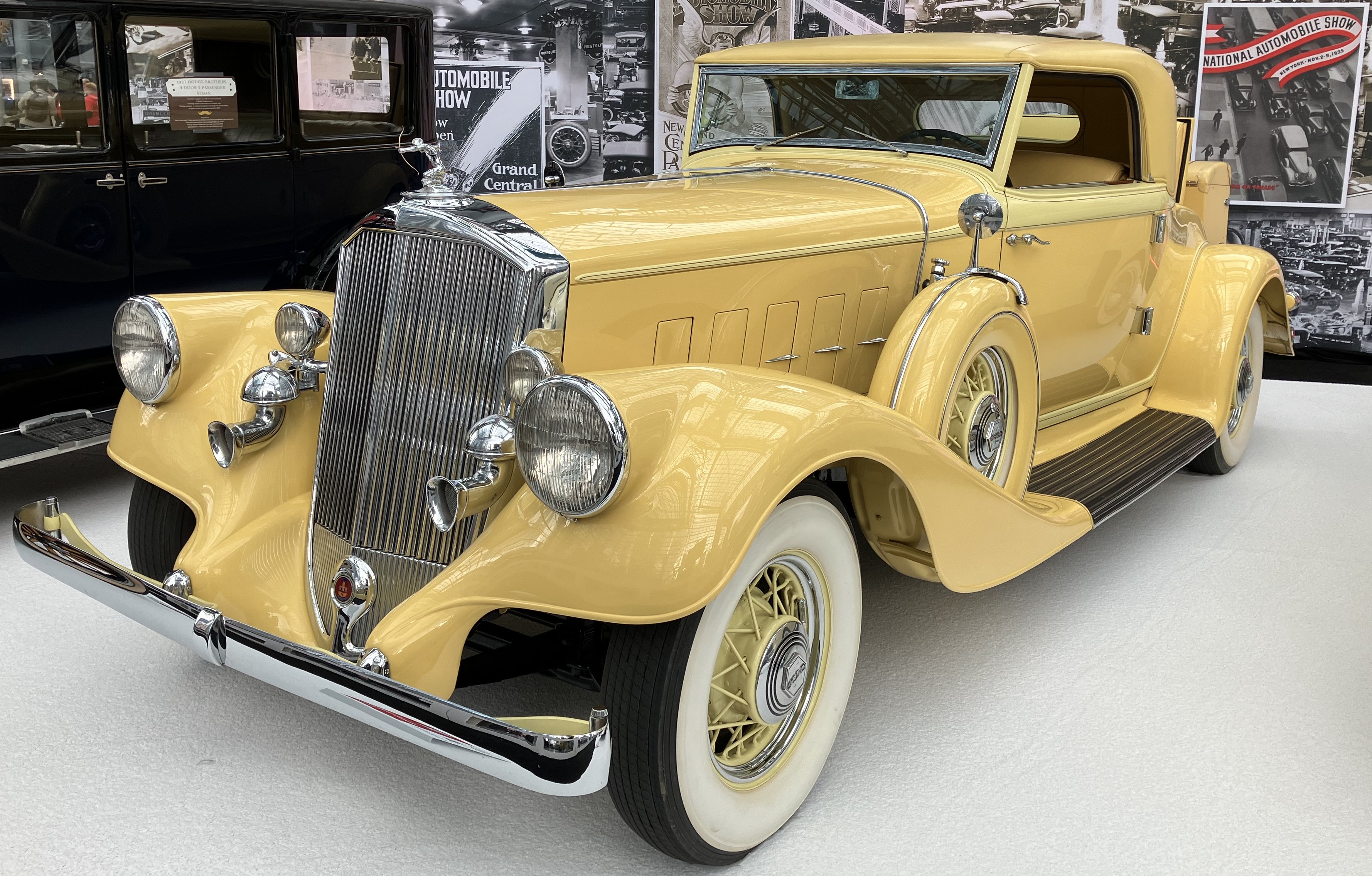We All Shine On: John, Yoko, & Me
By Elliot Mintz
Dutton
293 pages
$32
If you were to pull all the sycophantic lines out of We All Shine On, Elliot Mintz's memoir about his relationship with John Lennon and Yoko Ono, you'd have enough material to fill a small, stand-alone volume. The full effect of his obsequiousness doesn't hit you until you're well into the book. For me it reached a breaking point on page 262, when Lennon asks Mintz if there's anything he doesn't like about Double Fantasy, Lennon's final album, a collaboration with Ono. "I can't think of anything I don't love about it," Mintz says, not daring to utter a single word that might convey the slightest hint of negativity about Ono's questionable contributions, which make up half an LP that Lennon, in his own journals, called "mediocre."
The harshest thing Mintz can bring himself to say about Ono is that it seemed risky "that she put so much faith in the occult." But he also notes that when he was working as a radio journalist she ruined his interview with Baba Ram Das, the psychologist, when she insulted him, saying that he sounded "a little phony," and she (and Lennon) constantly interrupted his interview with Salvador Dalí. (He took Lennon and Ono to the interviews because, he says, they wanted to go and "there was no way I could say no.") Otherwise he showers Ono with praise, saying that she is "a complicated woman, gaming out her future like a chess master thinking five moves ahead"; writes music that's "inspiring," "sweet," "poetic," and "comforting"; and manipulates John "with the cool precision of a doctor preparing for an amputation." Mintz also seems to agree with Lennon's assessment of Ono that she's "always right."
Mintz does not treat Lennon with the same unflagging respect. Though he never criticized John to his face, the ex-Beatle's repeated verbal abuse seems to have left Mintz with a certain amount of resentment. And it comes across in his descriptions of Lennon's egregious and well-documented character flaws. But if he'd ignored them, the book's lack of credibility would be even more obvious.
Lennon's alcohol-fueled ugliness casts a shadow over We All Shine On. Mintz is often "all but carrying" a drunken Lennon somewhere. A typical incident takes place in Tokyo in 1977. Mintz and Lennon are drinking in a sake bar. The crowd recognizes John and goes nuts. Mintz and Lennon flee into the street, but Lennon wants to drink more. Mintz insists they return to the hotel. Lennon grabs him by the lapels, slams him against a wall, and says, "If I want to have a fucking drink, you're not standing in my way." (On another occasion, a completely sober Lennon says to Mintz, "I'm gonna ask you to do anything I fucking feel like asking you. Don't ever tell me what I can or can't say to you.")
The worst episode occurs in 1973 after Lennon and Ono separate and he moves to LA with May Pang, his assistant who became his lover. Ono has instructed Mintz, based in LA, to look after John because, he says, he was "functionally a child when it came to taking care of himself." One night, while living at record producer Lou Adler's house, Lennon, in a drunken rage after a difficult recording session with Phil Spector, smashes Adler's gold records with a walking stick until security guards subdue him and tie him to a chair. Mintz arrives to find Lennon still raging and demanding to be untied. "Then," he writes, "John spat out an epithet so hurtful and offensive… I can't bring myself to repeat it." (Lennon, I'd imagine, used a more vicious variation of the "queer Jew" remark he said to Brian Epstein when Epstein asked him to suggest a title for his memoir—he called it A Cellar Full of Noise.)
Mintz's treatment of May Pang underscores the book's lack of credibility.
Where Pang was during this incident is unclear, and it's Mintz's treatment of her that underscores the book's lack of credibility. After he picked up John and May at the airport, he says, he seldom saw her again in LA and can't recall a single conversation, in LA or New York, in which John mentioned her name. He writes her out of the story, challenging Pang's perceptions of her relationship with Lennon and implying that she's delusional if she thinks Lennon had deep feelings for her. He says that her account of what happened in LA gives you the impression that "she was the red hot center of John's universe" when, in fact, her only job "was to make sure John was properly fed and cared for." The furthest Mintz goes is to admit that John had some "genuine affection for her." May, according to Mintz, was nothing, and Yoko was his only true love.
If it's true that Mintz rarely saw John and May together in LA, it's because Lennon didn't want him to see them together and have Mintz report back to Yoko. And if John never spoke to Mintz about May, it's because John continued seeing her after he returned to Yoko. According to Lennon's own journals, he saw May anytime he could get away from Yoko and carried a flame for her until the end. John wanted them both but Yoko wouldn't allow it.
Yet We All Shine On, despite its credibility issues, is an entertaining book, and Mintz, who doesn't credit a ghostwriter, shows flashes of writing talent. Though there's the occasional cliché ("after what felt like an eternity"); the intermittent slip into PR-speak ("No one can capture the way Lennon talks in writing"); and a handful of overdone similes (in the same paragraph Mintz is "like a tragic character in an Edgar Allan Poe story" and a moment in the Dakota is "like a scene from a classic film noir thriller"), he knows how to tell a story. And there are a few stories that even the most avid Lennon fanatics probably haven't heard. For example, Lennon and Mintz, on their way to the airport in LA, stop, on John's command, at a seedy strip club, the Losers, and even as the dancers gyrate inches from Lennon's face, they don't recognize him—he's too out of context. And Mintz's melancholy recollection of Lennon and Paul McCartney's awkward Christmas reunion at the Dakota nicely illustrates how the ex-Beatles had grown apart and had little to talk about.
There are also some charming descriptions of Laurel Canyon in the early 1970s, when Mintz lived there, and of Karuizawa, Japan, in 1977, where he spent time with Lennon and Ono.
Mintz does manage to make himself seem sympathetic with a relatable backstory. He grew up in Washington Heights, in upper Manhattan, at the time a working-class Jewish neighborhood. His father, a Polish immigrant, worked in the garment business. Mintz was shy, awkward, and smaller than his classmates. He also stuttered, which led to his being bullied. Wanting to work in radio, he studied broadcasting at Los Angeles City College and overcame his stutter. His big break came while still in college, in 1963, when President John F. Kennedy was assassinated. One of his classmates was in the marines with JFK's killer, Lee Harvey Oswald. Mintz interviewed him, and by the end of the day the interview had been broadcast all over the city. Soon he had a job interviewing rock stars and beat poets on late-night radio. Impressed by Ono's experimental LP Fly, he interviewed her, it went well, and she started calling him all the time. Sometimes they talked for as long as seven hours. Then he interviewed Lennon and soon had a hotline installed in his house exclusively for Lennon and Ono, as well as a red light over his bed that flashed when they called in the middle of the night. (Mintz claims he has a photographic memory and can "reconstruct complete conversations" he had with Lennon and Ono a half-century ago. He most likely recorded them, a common practice among the Lenono company employees.) "I had come to accept that being at John and Yoko's beck and call was becoming my mission in life," he writes. "Why I accepted that mission, I couldn't tell you. I just did."
Maybe Mintz's personal life was empty and the Lenono connection filled him with the identity he craved.
To venture a guess: Maybe his personal life was empty and the Lenono connection filled him with the identity he craved.
One of the book's oddities is Mintz's irrelevant and distracting emphasis on his girlfriends, which, to venture another guess, nobody really cares about. But he wants you to know that he did, indeed, have girlfriends. He refers a number of times to his impossibly demanding relationship with John and Yoko and their endless phone calls as the reason he never married and had children. "If only I'd had the strength to resist the undefinable magnetic pull [of John and Yoko], I might have ended up having a more balanced, traditional existence," he writes. Instead, he says, he was married to John and Yoko.
The girlfriend dynamic plays out in a story he tells about a "stunningly beautiful" woman he met at the Troubadour club, in LA, in 1971. He of the photographic memory can't remember her name but says she might have been his "soulmate." He's in bed with her when Ono calls at four a.m. Maybe, he thinks, he shouldn't take the call. But he takes it, and he's on the phone for more than an hour talking with her about losing weight. His girlfriend wakes up and wants to know what's going on. He can't tell her. John and Yoko are a secret, and divulging the friendship would be breaking their "unspoken code of trust" (which becomes spoken when Ono orders him, "Just keep us your secret"). Mintz's potential soulmate leaves and he never sees her again.
Another peculiarity is Mintz's take on his multitude of celebrity friends, neighbors, and acquaintances. The name-dropping is intense: Sal Mineo, Mickey Dolenz, David Cassidy, Donovan, Brian Wilson, Beau and Jeff Bridges, Alice Cooper, Paris Hilton, Joni Mitchell, Linda Ronstadt, Carole King, David Crosby, Stephen Stills. He says he doesn't know exactly why celebrities are attracted to him. "I never sought out relationships with famous people; they just somehow gravitated towards me…. It's the story of my life, being befriended by the fabled and adored." His best guess is that he's done so many celebrity interviews, he's not starstruck, and I'm sure that's part of it. But Mintz is also small (Ono size), unthreatening, discreet, takes abuse well, and follows orders. Most importantly, he had popular radio and TV shows that provided a safe space, devoid of uncomfortable questions, where celebrities could promote their work.
Mintz obliterates his last shreds of credibility when he tells the story of Fred Seaman, John and Yoko's personal assistant.
In the final part of the book, which covers the aftermath of Lennon's murder, Mintz obliterates his last shreds of credibility when he tells the story of Fred Seaman, John and Yoko's personal assistant and Lennon's paid companion—essentially one of Mintz's New York counterparts. I'm intimately familiar with this particular lie because it involves me. For a detailed account of what happened, I'd direct you to my own book Nowhere Man: The Final Days of John Lennon, especially a chapter titled "An Open Letter to G. Barry Golson." Golson was the Playboy magazine editor who, in 1984, shepherded into print a more elaborate version of the tale that Mintz has been peddling for more than 40 years and that he dictated to David and Victoria Sheff who are credited with writing the story.
In We All Shine On, Mintz says that after Lennon's murder Seaman, portraying himself as "Lennon's true disciple," smuggled out of the Dakota five of John's personal journals, gave them to me, and instructed me to write a "tell-all book."
One part of this is true: Seaman did give me Lennon's journals. As I describe in Nowhere Man, he told me that in the summer of 1980, when Lennon was in Bermuda working on Double Fantasy, he had a premonition of his death—listen to "Borrowed Time," recorded in Bermuda—and if anything should happen to him, it was Seaman's job to tell the true story of his life and use any research material he needed.
As I later testified under oath, at Seaman's 2002 copyright infringement trial: Yes, I believed him. I had no reason not to. Seaman, a close and trusted friend, had always been supportive of my writing career and wanted me to help him write John's biography. The journals alone were proof enough that he was telling the truth. It didn't seem possible that he could just walk out of the Dakota with John's diaries unless he'd been authorized to do so.
The project blew up in my face in 1983 when Seaman ransacked my apartment while I was out of town, taking everything I'd been working on. I then came forward and told Ono what happened. She asked to see my diaries beginning from the day she hired Seaman. Mintz was one of the people she gave them to: 500,000 words, written in the heat of the moment, most of them on teletype paper run through an IBM Selectric typewriter—a Kerouac-inspired literary experiment. Mintz and the Playboy team combed through those pages searching for anything they could use in their article that would damage me and Seaman. From those half-million words they cherry-picked about 200, and distorted them with their own commentary.
One sentence pilfered from my diary originally described Ono's unparalleled ability to exploit the Lennon name only months after his death: "Dead Lennons equal big $" (as Mintz slightly misquotes it). Forty years ago in Playboy and now in his book, Mintz turns the line around to say it's a description of my own and Seaman's attitude toward Lennon's murder. Except Mintz now says that Seaman "scrawled" the line in his own diaries. Why he attributes it to Seaman and says it was scrawled rather than typewritten appears to be a gratuitous lie intended to do nothing more than further damage Seaman.
Another probable (though harmless) lie is Mintz's account of how he found out Lennon had been murdered. He says his mother called him because she heard on the radio somebody had been shot "at that building on Seventy-Second Street you're always visiting." He tries calling the Dakota but can't get anyone on the phone. He turns on the TV. Nothing. (It doesn't occur to him to turn on KNX, LA's all-news radio station.) In a panic he decides to fly to New York and drives to the airport, but the radio in his Jaguar isn't working. Walking through the airport, he sees nothing, hears nothing. On the plane, a crying flight attendant emerges from the cockpit. He asks her what's wrong and she tells him John Lennon is dead. The story simply does not have the ring of truth, and it's a reminder that little in this book can be taken at face value and every word, especially about Lennon and Ono, should be regarded with extreme skepticism.
More lies: When Albert Goldman's 1988 biography, The Lives of John Lennon, is published, Mintz asks Ono to do a radio interview to dispel "rumors" that "John's 'househusband' image was a public relations fraud" and that he was a devotee of prostitutes. It's more or less true that Lennon was kind of a quasi-househusband at times, but he did have a masseuse regularly come to the Dakota to manually pleasure him (Ringo walked in one such session) and he did visit prostitutes in South Africa when he went there in April 1980. He wrote about it in his journals.
Another one of Mintz's New York counterparts, Michael "Mike Tree" Medeiros, Lennon's gardner, personal assistant, and friend (Ono's attorneys have blocked the publication of his memoir), disputes a number of Mintz's claims about what happened when he arrived at the Dakota after John's murder. Mintz says he saw Lennon's blood on the pavement as he entered the building. Medeiros says the blood was cleaned up long before Mintz arrived. Mintz says he spent a lot of time with Ono's employees "fielding a never-ending barrage of phone calls." According to Medeiros, one of the people fielding those calls, Mintz never fielded any phone calls.
Yes, these are minor threads in a tapestry of lies, and to point out more would be redundant. But they do show that the essential problem with the book is how to discern truth from Mintz's skillfully spun PR fantasies. Perhaps it's best to keep in mind that the author of We All Shine On gave up a journalism career to lie on command for Lennon and Ono, to be their G. Gordon Liddy—a man who would walk over his own grandmother for John and Yoko (as Liddy said he'd do for Richard Nixon).
We All Shine On is both a fairy tale and a masterpiece of propaganda. It's the flip side of Seaman's book, The Last Days of John Lennon, also a well-crafted, entertaining read with serious credibility issues but that has nothing good to say about Ono (and that Ono's attorneys were able to force out of print).
In the case of both books, truth seekers would be well advised to look elsewhere.
Disponible en español
______
All my books are available on Amazon, all other online bookstores, and at your local brick-and-mortar bookstore.
I invite you to join me on Facebook or follow me on Instagram and Threads.


































